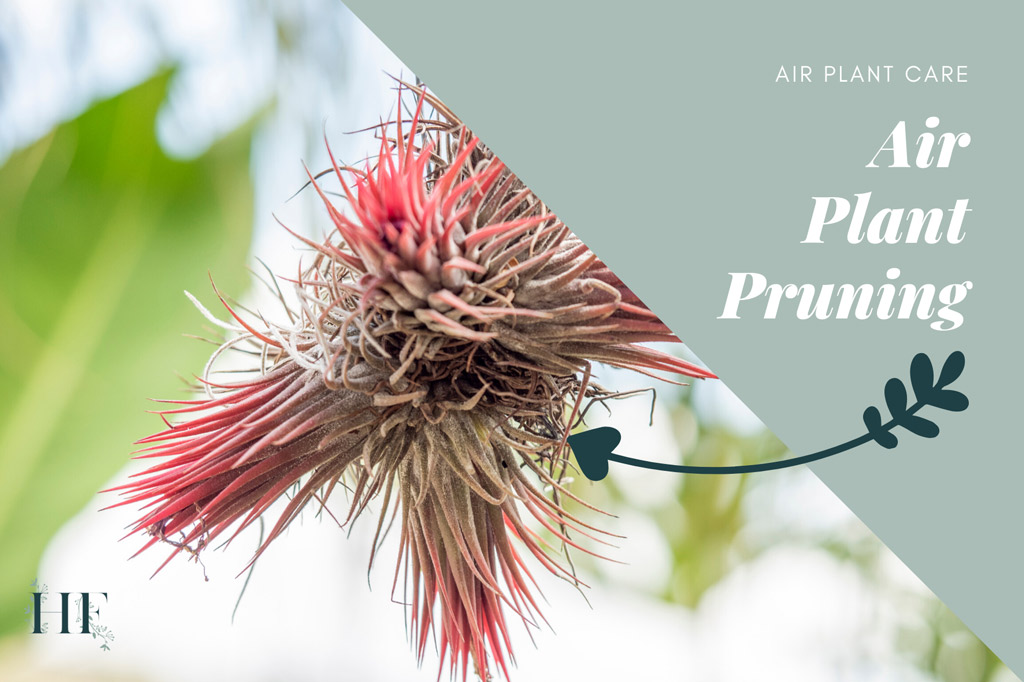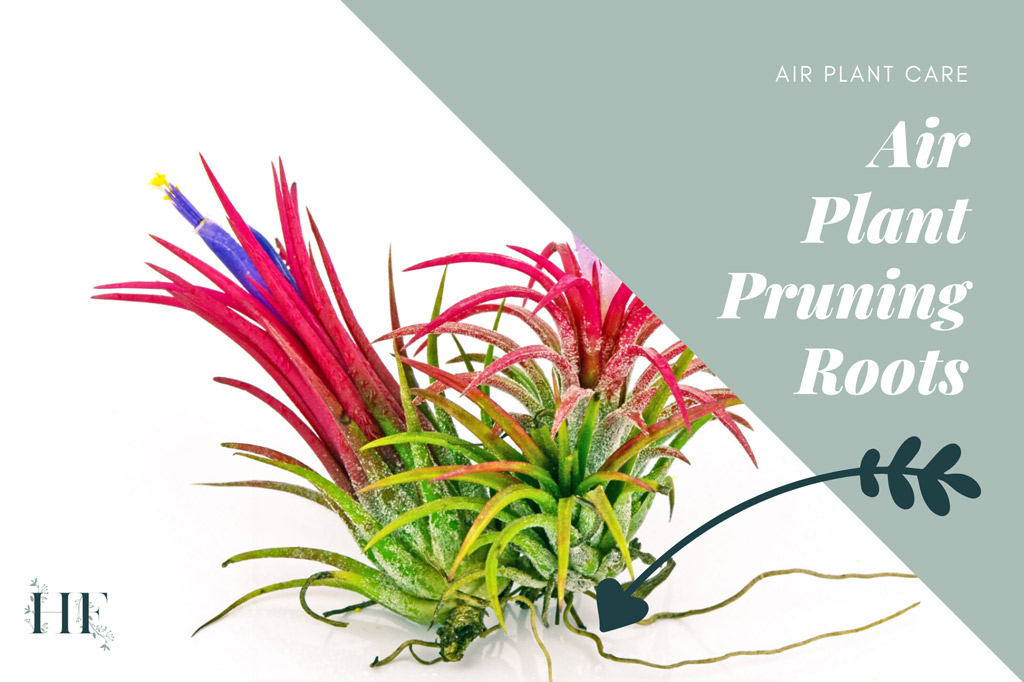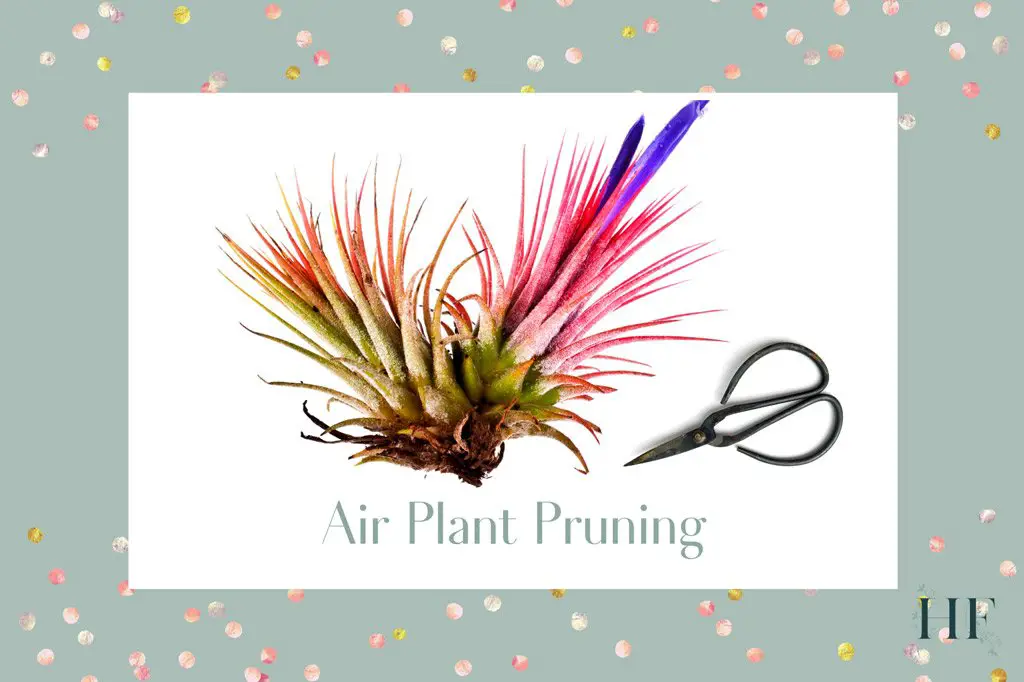I love air plants for their low maintenance nature. But, like with any plant, the Tillandsia genus needs periodical care to maintain its healthy and make them thrive. So, is air plant pruning necessary? Can you trim an air plant?
Air plants need pruning to encourage healthy growth and keep pests and diseases at bay. Trimming air plants consists of removing damaged and dried parts of the plant. You can cut dried leaf tips (brown leaves), broken or sick leaves, and dead flowers.
Let’s look at how to trim air plants and when to do it in detail.
Air Plant Pruning
Air plant pruning is a horticultural practise that involves cutting off the dead leaves and damaged parts of a plant.
Here’s what you need to know about grooming and maintaining your air plants.
Can You Trim an Air Plant?
Air plants need pruning for appropriate maintenance. Trimming your air plant helps to encourage overall healthy growth, including new leaves, blooms and pups.
This practice also protects the plant from disease and pests. Plus, dead and brown leaves will put the plant at risk of rotting or drying up.
Read also: 13 Common Air Plant Problems, Pests and Diseases.
Last but not least, pruning helps to maintain the beauty of your air plan. Who doesn’t want a pretty looking plant?

How Do You Trim Air Plants?
There are some important things to keep in mind when trimming your air plant:
- Cut the leaves at a 45 degrees angle for a natural look (i.e., don’t trim the air plant leaf straight across).
- Use a clean pair of scissors (I use these small Okatsune scissors) to prevent rotting or plant disease. You can find the pruning shears I recommend here.
- Start cutting an air plant from the base and work your way up.
When pruning an air plant avoid:
- Pruning the bottom of the plant or the inside leaves since air plants grow from their centre or core.
- Cutting the stem in the middle because an air plant cannot survive or propagate otherwise.
- Trimming your air plant so much that the Tillandsia is left with not enough foliage to perform photosynthesis (the CAM cycle).
Finally, since the leaves cannot regenerate themselves once you cut them off, I recommend trimming your air plant with care and only when needed (continue reading for best trimming practices).
Read also: Air Plant Care – 8 Steps to Grow and Keep Tillandsias Alive.

When Do You Prune or Trim Air Plants?
Although you might think of pruning when something is wrong (i.e., dead leaves), you might find the necessity to trim your Tillandsia in other situations too. Let’s go through all of them.
There are three scenarios when you want to trim your air plant:
1) Dead Leaves
Your Tillandsia will lose some of its leaves as the leaves wilt and dry due to a changing environment. Often, you will find dead or brown leaves at the base of your air plant.
It is normal for some of the lower leaves of your air plant to dry out as the plant grows or acclimates to a new environment. Some dead leaves are normal and don’t necessarily mean that your air plant has a problem.
You can gently tug those dead leaves off, or trim them with small scissors like the Okatsune Garden Scissors.
Be cautious when removing dead leaves as sometimes a pup will be growing under the shelter of one of these leaves.
If that is the case, you should leave the leaf on until the pup has grown to about 1/3 the size of the mother plant. Then, you can trim the leave off.
2) Broken Leaves
It’s not uncommon for air plants, or any houseplants, to have damaged or broken leaves, especially if you have pets.
You can also prune damaged or broken leaves at an angle to clean up the look of the plant.
3) Browning Leaves
Browning leaves should be trimmed off since they take the energy away from your plant. Also, it will be helpful to determine the cause to prevent future brown leaves. This could be an indication of too much light or too little water.
If the leaf tips have dried out, you can snip the dried tips off. When you do so, try trimming at an angle to leave a natural-looking pointy tip.
Personally, I don’t trim brown leave tips since I don’t think it damages the look of an air plant. I do prune yellow and brown leaves since they take the energy away from the plant and attract pests.
Read also: 13 Common Air Plant Problems, Pests and Diseases – discover why the leaf tips of your air plant are turning brown.

4) The Roots
Air plants are epiphytes, which means that they absorb the required nutrients and moisture from the air instead of from the soil. Their roots’ function is to attach themselves to a tree or some other surface.
Since the roots of an air plant do not absorb nutrients, air plants can survive without them as well.
If you want to display your air plant mounted in wood, you can use the roots of the air plant to help attach it.
Otherwise, when kept as houseplants, you can trim off these roots for aesthetic purposes.
If you do decide to trim the roots, take care to trim only the roots and don’t cut into the base of the air plant itself.
5) The Spike
Cutting the spike of an air plant after it blooms encourages the growth of offsets or pups (baby air plants).
So, you can also cut the spike of the air plant after the blooming phase so that the air plant can focus its energy on the growing pups.
Read also: Air Plant Life Cycle, Reproduction and Growth Rate.
6) The Dead Mother Plant
Most bromeliads, including the Tillandsia genus, are monocarpic. This means that they grow to maturity, flower, set seed, produce offsets and then die.
Once the mother air plant has died completely, you can prune it, leaving the offsets in situ to grow on.
If you leave the pups connected, they will continue to grow even after the mother plant dies. They will form an air plant cluster or clump, basically, a group of air plants arranged in a circular shape. This formation is also known as “tillandsia balls.”
Read also: Air Plant Propagation Guide and Pup Care.
Air plant pruning is essential to keep your Tillandsia healthy and looking its best. A bit of grooming goes a long way!

